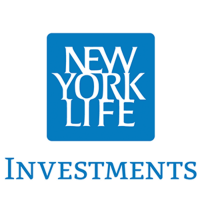All topics
Emerging Markets Update
Differentiation: Not All Emerging Markets are the Same
Rising global interest rates, bond yields and a strong dollar create headwinds for emerging markets, as do rising input costs and risk aversion. However, the investment approach needs to be more nuanced, with commodity-rich countries poised to benefit as prices rise on potential supply chain concerns, while ‘national champion’ corporates continue to compete successfully in a global market. Relative valuations are amongst the cheapest in a decade, whilst the long-term structural positives of urbanisation, demographics, technological adoption, and an aspirant middle class underpin the growth dynamic.

The Rise of India's Private Equity Market (CAIA, 2022)
This detailed CAIA report offers key insights about the Indian Private Equity and Venture Capital (PEVC) sector where estimates suggest that PE firms invested $39.5 billion in 2020, an almost five-fold increase in a decade.
Asian Private Credit: Celebrating China (BlackRock)
For compliance reasons, this paper is only accessible in the United States and Canada
Chinese credit markets offer investors a diverse range of opportunities, suggests BlackRock. They take a deep dive into both the macro and micro issues affecting the bifurcated Chinese credit market, and highlight a range of enticing prospects.
Insurance Perspectives: Considerations for EM debt (MetLife IM, 2022)
MetLife IM suggests that insurance companies should consider emerging market debt as a portfolio diversifier and, potentially, an opportunity to generate attractive risk adjusted yields via a range of different structures and strategies.
China Deleveraging: Domestic and global impacts (T. Rowe Price, 2021)
For compliance reasons, this paper is only accessible in certain geographies
This paper from T. Rowe Price looks back at Chinese markets in 2021, which saw a return to deleveraging, though more recent policy decisions appear to have reversed elements of this.
China A-Shares: The S&P China A 300 Index (S&P Dow Jones Indices, 2022)
In this paper from S&P Dow Jones Indices they compare the two key index benchmarks for the China A share market.
Monetary Tightening Amid Uncertainty: Implications for EMs (Manulife IM, 2022)
For compliance reasons, this paper is only accessible in certain geographies
Following the rate hike by the U.S. Federal Reserve, Manulife reflects on the implications for emerging markets of the 25 basis points increase.
Fed Tightening Cycle Is Not Always Bad News for Emerging Markets (VoxEU, 2022)
VoxEU argues that a tightening U.S. rate cycle need not be bad for emerging markets, provided the rise in rates is driven by expectations of stronger economic growth.
Commodity Prices Drive Differentiation Within EMD (Capital Group, Mar 2022)
For compliance reasons, this paper is only accessible in certain geographies
In the light of the spikes in commodity prices associated with the Russia-Ukraine crisis, Capital Group considers how that might affect emerging market debt.
Latin America: Shifting political winds (Franklin Templeton Investments, 2022)
For compliance reasons, this paper is only accessible in the EMEA region
Franklin Templeton’s paper looks at the changing political scene in Latin America, where the 2021/22 election cycle has already thrown up some surprises, and where several more elections are slated for the 2022 calendar in Colombia and Brazil.
Evaluating EM Equities as the Russia-Ukraine Crisis Continues (Invesco, 2022)
For compliance reasons, this paper is only accessible in the United States
Justin Leverenz, Senior Portfolio Manager at Invesco, answers questions about the Russia-Ukraine crisis and whether there is still an investment case for emerging markets.
The Post-2008 Boom in Foreign Currency Corporate Bonds (VoxEU, 2022)
VoxEU notes that post the GFC, a wave of U.S. dollar denominated debt was issued by emerging markets, which could potentially create instability in EMs, particularly now that the U.S. rate cycle has turned.





